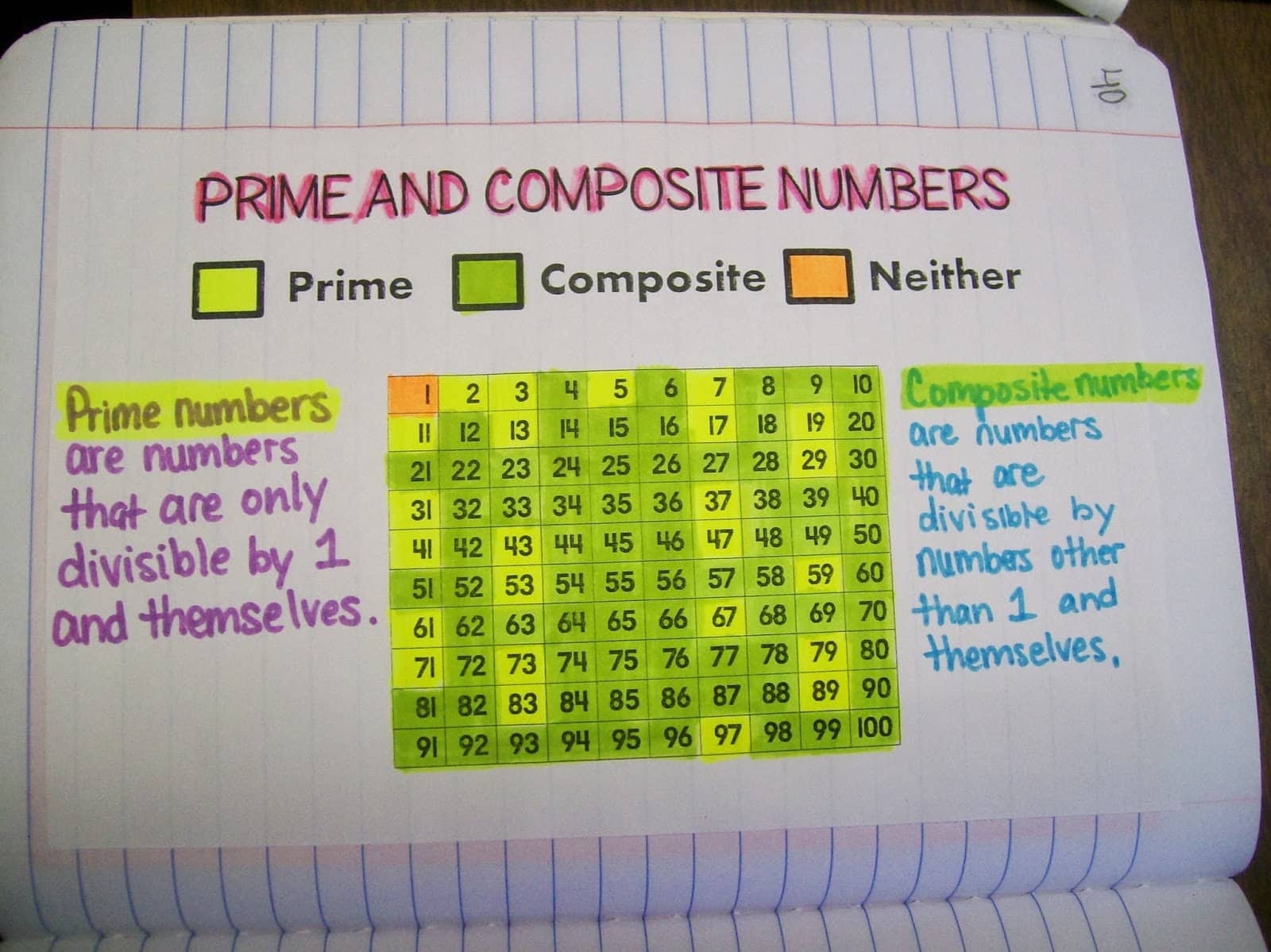Prime Numbers Poster
This blog post contains Amazon affiliate links. As an Amazon Associate, I earn a small commission from qualifying purchases.
Today I’m sharing a free prime numbers poster.
I have so many ideas of how I would teach things/do things if life was ideal. And, by ideal, I mean I could pause time occasionally and get 100% caught up with my to do list.
I’m pretty sure I have no idea what it feels like to be caught up with one’s list of things to do. I still have things on my to do list that I put on there when I moved to Drumright in July of 2012.
It’s now October of 2014. I guess subscribing to the local newspaper isn’t at the top of my list of priorities…
When I teach simplifying radicals, I teach my students to find the prime factorization of their radicand first.
Prime factorization is something that they should come to my classroom knowing, but I’ve found that many of my students need a short refresher course on prime and composite numbers.
I usually accomplish this by having my students classify the numbers between 1 and 100 as prime, composite, or neither. We make a little chart to keep in our interactive notebooks.

When students are working on finding the prime factorization, I encourage them to keep their notebooks out and open to this page. However, you know how that goes.
Students soon get where they just start assuming that a random number is prime instead of checking their chart.
Three years ago, I had this idea that I was going to make prime numbers poster to hang on the wall. It never happened. I taught radicals again. And, again, I vowed to make posters.
At one point, I cut colored paper and assigned each student a prime number. They were to decorate their paper with their prime number. Then, I would laminate them and hang them up.
Silly me didn’t think to specify to students how to orient their papers before writing on them. Oops…
This year, I decided I was going to make this prime number poster thing happen. But, I had a sort of dilemma. The walls of my classroom are literally covered in posters. Where could I hang the prime numbers?
Eventually, I decided that I had yet to utilize a small 4 inch gap between the bulletin board and the edge of the wall.

I made a quick template in Microsoft Publisher that was 3 inches wide. It didn’t take long to duplicate the page and type in the prime numbers in a cute font. This was made and printed in 7 minutes tops.
I gave one of my student aides the job of printing it on card stock, laminating it, cutting it out, and taping it to the wall.

The verdict? Success. Students are actually using the poster while working on their assignments or quizzes! And, this makes this math teacher oh so happy.







Sarah!
I would love to talk^25, but I have papers from 6 classes waiting to be graded, 2 math contests this week, and the quarter ends Friday… yikes!
I have a request. Could you slide your camera to the left just a little and take a picture of the bulletin board to the left of your prime number strip–the one just above your calculator pockets? I'd like to shamelessly steal your ideas, I think. And while you're taking pics, could you get me a close up of the bulletin board just to the left of your SmartBoard? 🙂
I've been teaching a LONG time–longer than you've been alive, to be honest. I, too, teach in a tiny rural school (even smaller than yours, if you can believe it). But my journey started in Oklahoma at OBU & there are >= hundred things that make me think we just might be kindred spirits! I sooooo want to visit…
Until that happens, though, just know that I really do enjoy reading your posts. Well, even after we get a chance to visit, know that I really enjoy reading your posts!
Raelynn @rokBallard
Did the owner of that notebook ever let 23 back in with the primes? Since one was missed, what method are you using for classifying numbers in your 10×10 table of early primes/composites? I think using the sieve of Eratosthenes and a 6×20 table is rather neat. The table neatly arranges all multiple of 2 and 3 in vertical columns and all multiples of 5 and 7 in 45 degree diagonals, so designating composites according to the sieve method can be accomplished quickly and safely by marking with straight lines (i.e. not leaving ambiguous partial marks on other cells). Since those lines mark multiples of all primes less than 11, all composites less than 11**2 will be marked, hence choosing 20 rows.
23 is a prime number